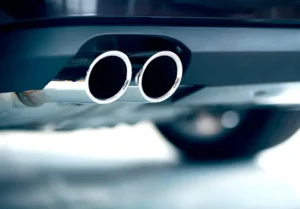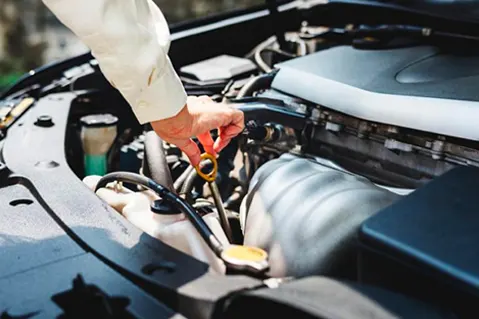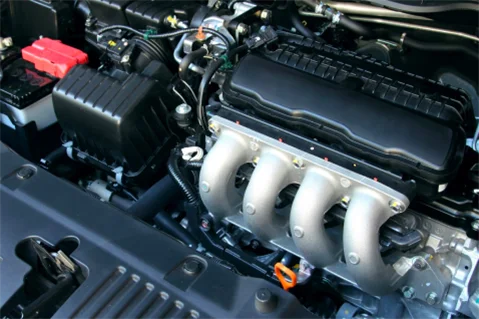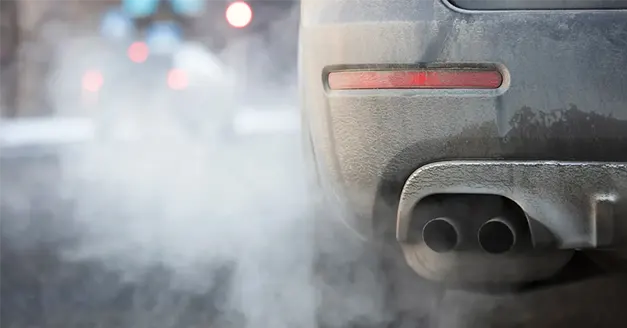
Vehicle owners and fleet operators: do you know how your vehicle’s ventilation systems affect your vehicle’s emissions output? More specifically, have you checked on your positive crankcase ventilation system (PCV) as of late?
Positive crankcase ventilation system: we know it’s a mouthful. And we get that a PCV system is likely one of the last items on your mind when assessing a vehicle’s emissions.
But knowing your PCV system is crucial for decreasing vehicle emissions and ensuring the longevity of your powertrain engine.
GlobalMRV here: we help companies worldwide make the greener future of tomorrow a reality today. We’ve collected and analyzed over 3,000 hours of reliable data and helped save original equipment manufacturers (OEMs) and companies more than $5,000,000 on traditional dynamometer and real driving emissions (RDE) testing for clients of all different industries and niches.
And that’s just in the last decade alone!
If you want to learn more about your PCV system and its effect on your vehicle, the planet, and your bottom line, then this guide was made for you.
Join us as we explore the role of positive crankcase ventilation systems on vehicle emissions control.
The 5 W’s (and 1 H) of positive crankcase ventilation systems

The 5 W’s: who, what, when, where, and why (and how). Let’s take a look at each of them with regard to positive crankcase ventilation systems.
- What is a positive crankcase ventilation system (PCV)? Positive crankcase ventilation systems are a crucial component for modern-day automotive engines. The PCV helps with maintaining the efficiency of an engine and ensuring the life of a powertrain vehicle.
- Who uses them? Most vehicles and fleet trucks with an internal combustion engine (ICE) have a PCV system.
- When and where are they used? Any time a vehicle is operating in on- and off-road conditions, a vehicle uses the positive crankcase ventilation system to provide better fuel efficiency (You can learn more about this topic in the next section).
- How does it work? The PCV uses hoses and valves to redirect crankcase gasses back into the intake manifold. A one-way valve — aptly called the PCV valve — regulates the flow of gasses throughout the PCV system allowing the gasses to mix with incoming air and fuel. The mixture is then burned during combustion.
- Why is it needed? The question should really be, “How is it not needed?” All jokes aside, PCV systems are designed to control and recycle gasses produced in the engine’s crankcase. Without your PCV system, harmful vapors — like hydrocarbons and blow-by gasses — can leak into the atmosphere. Leaks can be harmful for our planet and can result in less efficient engine performance.
In a nutshell, the positive crankcase ventilation system regulates harmful gasses and prevents them from escaping into the atmosphere.
Most importantly, if gasses are left unchecked, pressure can increase inside the engine, resulting in decreased engine efficiency and increased greenhouse gas (GHG) emissions. In sum, the PCV system helps you with emission control with your vehicle.
The benefits of PCV systems

The PCV system provides several benefits, including:
- Reducing vehicle emissions: PCV systems can help curb harmful nitrogen oxides and other hydrocarbon emissions. The reduction of key hydrocarbons and blow-by gasses means a company can provide a cleaner operation needed for environmental, social, and governance (ESG) emissions reporting and compliance.
- Engine efficiency: when a PCV system operates in peak condition, it can help balance crankcase pressure. With balanced crankcase pressure, resistance faced by piston rings decreases, which results in fewer oil leaks. Fewer gas and oil leaks mean cleaner roads.
- Better fuel efficiency: when your automobile’s engine takes escaped gas that leaves the crankshaft, the PCV valve opens and sends the escaped gas back to the intake manifold. From the intake manifold, the gas is pumped back to the cylinders for a chance at combustion. As a result, you and your vehicle benefit from more efficient oil consumption and better fuel economy (and who doesn’t like that?).
- Increased engine lifespan: the combination of venting and removing escaped gas from an engine’s crankcase ensures excessive crankcase pressure doesn’t build up. As a result, the potential for an oil leak to occur is greatly reduced. The combination of less pressure and fewer oil leaks means fewer avoidable instances of engine wear and tear. And less wear and tear means increased engine life for you and your vehicle.
Most of the time, when you’re driving your automobile, you’re not aware that your vehicle is recirculating the air and gas that pulls down the piston rings into the engine’s crankcase. That’s because the entire PCV system is working as it should to keep your vehicle running well and without worry.
But, just in case you have problems with your engine, you’ll want to be able to rule out that the source of your emissions and vehicle problems aren’t due to a faulty PCV system.
That’s where identifying a faulty positive crankcase ventilation system can come in handy.
How to identify a faulty positive crankcase ventilation system

Faulty PCV systems can spell out issues for a vehicle (and your wallet). Knowing the most common symptoms of a faulty PCV system can help you keep your emissions output under control, save you money, and keep your engine running long and strong.
If you experience any of the following, you might have a malfunctioning PCV system on your hands:
- A significant and sudden decrease in fuel economy: Since the PCV system helps regulate the air-fuel mixture in and around the vehicle, a faulty PCV system can mean improper combustion, which can result in decreased fuel economy.
- Rough, uneven, or unstable idles: you may notice vibrations or sudden jumps and dips in the engine’s revolutions per minute (RPM) when the vehicle is at a complete stop.
- Engine misfiring: the PCV system is key for ensuring the right air-fuel ratio for your vehicle. You may also notice stuttering, shuddering, or vibrating sensations if the PCV system is acting up.
- Blue-gray smoke coming from the exhaust pipe: malfunctioning PCV systems can cause more oil vapor to be burned in the combustion chamber, which means more vehicle smoke emissions from the exhaust.
- Oil leaks: when a PCV system fails, pressure builds within the engine. As a result, oil may leak from seals and gaskets, thereby leaving oil puddles under the bottom of a vehicle.
Having a team that understands faulty PCV systems is key

Part of the work that we do at GlobalMRV is to ensure that the emissions are accounted for and monitored for large- and small-scale industrial operations that operate vehicles with PCV systems under their hoods.
Businesses and original equipment manufacturers (OEMs): whether you’re in need of fuel audits, engine development and research, or sustainability consulting for your operation, GlobalMRV’s team can provide all-inclusive emissions verification and testing solutions for ICE-based vehicles using PCV systems.
Having a team that understands the wide-reaching effects of a faulty PCV on the emissions output of your operation can save you time, money, and resources on your next vehicle operation.
The effects of faulty PCVs on emissions control

The PCV system is crucial for driving towards a greener future — especially for gas- and hydrogen-powered vehicles (electric vehicles don’t have PCV systems under their hoods).
With the market for automotive crankcase ventilation systems projected to grow at a compound annual growth rate (CAGR) of 5.3% from 2023-2030 (Business Research Insights, 2024), businesses and OEMs will want to keep their eyes on PCV systems.
If for no other reason than to stay in compliance with federal authorities for increased environmental regulations, the need for effective emissions monitoring and reporting will continue to increase as the need for automotive PCV systems continues to grow.
And with more PCV systems entering the market, the need for repairs will also increase. That’s a fact of life.
Especially if your business has to report on its emissions and pollutants output to federal authorities, you’ll want a working PCV system so your ICE-based engine is in tip-top condition come emissions reporting time. Most importantly, you’ll want a team that lives and breathes emissions control so you can stay on top of your obligations to federal authorities when the time comes to report vehicle emissions.
Fast Fact #3: Did you know…
Did you know that one of the first emissions control devices created in California was the positive crankcase ventilation system (PCV)? The PCV system was created in the early 1960s.
That’s more than half a century ago!
You can find more fast facts about vehicle emissions, regulations on vehicle performance, and all things emissions-related here on our social media platform.
GlobalMRV: The industry’s leading vehicle emissions control team

In sum, the positive crankcase ventilation system is a crucial system in an internal combustion engine (ICE)-powered vehicle. The PCV system helps ensure an automobile engine’s efficiency by decreasing emissions and moving unburned gasoline out of the crankcase and back into the air intake.
From there, the toxic gasses can be combusted, thereby increasing fuel economy, increasing engine efficiency, and reducing vehicle emissions.
And the good news is that with more efficient PCV systems — and emissions monitoring services — we’re creating a greener planet for us all.
Thanks to emissions testing, monitoring, and reporting, greenhouse gas (GHG) emissions from passenger cars has slowly been decreasing (Statista, 2024).
Businesses and OEMs: if you’re looking to reduce your GHG input or just need help with emissions management, monitoring, or reporting, we’ve got your back.
Our team of Ph.D. researchers, managers, analysts, engineers, and technicians have run more than 60 different types of diagnostic testing regimes and supported over 100 different vehicles and engines for overall emissions reduction and fuel calibration testing.
If you need to test the emissions output of a vehicle with a PCV system — or any electric, ICE, or hydrogen-powered vehicle for that matter — contact us today. Let’s make our planet a greener and better place to live.
FAQ about positive crankcase ventilation systems and vehicle emissions

How do positive crankcase ventilation systems work?
When an auto engine runs,, a PCV valve opens, which allows gas to enter the intake manifold. In the manifold, the gas mixes with incoming air and is then burned in the combustion chamber.
The PCV system ensures oil vapors aren’t recirculated back into the cylinders. In short, the PVC system helps keep your car (or other ICE engine-based equipment) from becoming more combustible than it needs to be. It helps recirculate gas for use in your vehicle.
What are the benefits of PCV systems for vehicle emissions control?
Some of the benefits of PCV systems for an ICE-powered vehicle include:
- Reducing vehicle emissions
- Engine efficiency
- Better fuel efficiency
- Increased engine lifespan
In short, PCV systems can help make your ICE-based operation more sustainable. These systems are also addressed in an overall sustainability consulting plan, as part of a larger analysis on components to assess to reduce carbon emissions.
Where can I assess the emissions output of my vehicle and its PCV system?
Many data management solutions providers provide services and products to help companies monitor and verify the emissions output of vehicles — those same vehicles with PVC systems under their hoods.
For example, at GlobalMRV we offer our portable emissions measurement systems (PEMS) via a Hardware as a Service (HaaS) model. You can try out our emissions measurement products risk-free by reaching out to a vehicle emissions representative at GlobalMRV.
It’s as simple as that.
To learn more about how our PEMS units can better serve your emissions-testing needs, contact us today for your complimentary, no-strings-attached consultation.